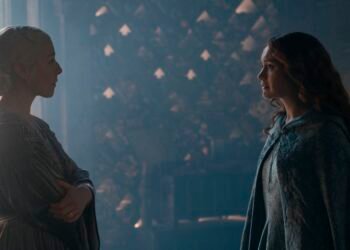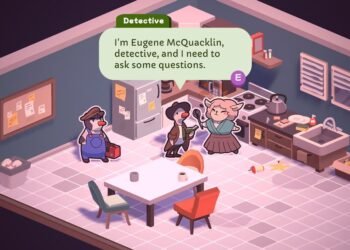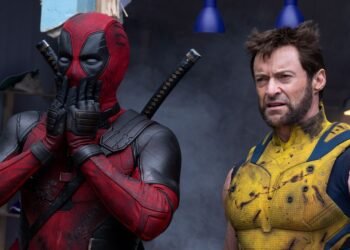Pandemic-weary viewers might be quick to dismiss Netflix’s comics adaptation Sweet Tooth as poorly timed or even gratuitous. The live-action version of Jeff Lemire’s post-apocalyptic comic series about a deadly virus began production before COVID-19 swept the world, but continued to shoot throughout it, weaving in imagery of social-distancing signs and fights about mask-wearing that make the show feel distressingly current.
But viewers who can get past fatigue of the moment will be rewarded with a beautiful, dark fairytale about the complexities of family. Weaving together three disparate plots that eventually intersect, the show offers three different visions of life after a devastating pandemic, each shaped by how its characters react to the end of the world.
The story is set about a decade after a disease killed most of humanity, and somehow caused all new babies to be born as human-animal hybrids. The plot centers on Gus (Christian Convery), a deer boy raised in peaceful isolation within Yosemite National Park. When his sanctuary is disrupted, he sets out under the grudging guardianship of former football star Tommy Jepperd (Nonso Anozie) to try to find his mother in Colorado.
The dynamic between Gus and Jepperd, or Sweet Tooth and the Big Man, as they call each other, is highly reminiscent of The Mandalorian, with a gruff wanted man with an aptitude for violence finding a chance for redemption in caring for a very special child. The first half of the eight-episode season particularly resembles the Disney Plus show, filled with episodic adventures that find the duo encountering a wide cast of enemies and potential allies in the wild world.

Photo: Netflix
Co-showrunners Jim Mickle and Beth Schwartz have crafted a fairly loose adaptation of Lemire’s comics, improving on them in every way. For instance, the Animal Army of the comics is a generic Mad Max-style cult led by a psychopath with a pack of dog boys. In Netflix’s version, the group is another example of the recent trend of comic-book adaptations telling stories of generational strife. The tribe of teenagers have vowed to protect hybrids from the adults they blame for ruining the world, and they lead violent raids from their base in an abandoned theme park. They dress in stunning costumes inspired by their favorite animals, and their aesthetic and behavior feels like a combination of the Lost Boys of Hook and the vampires from 1987’s Lost Boys.
The female characters in Lemire’s comics are perpetual victims, but Animal Army leader Bear (Stefania LaVie Owen) helps solve that problem in the show by providing a fierce foil for Jepperd. The character of Aimee (Dania Ramirez of Once Upon a Time and Heroes), a socially withdrawn therapist who finds new purpose by adopting a hybrid child, was invented for the show with the same purpose, but isn’t particularly well-developed. The writers are seemingly following the mold of Netflix’s The Witcher, which also only brings all the characters of its three plot threads together in the season 1 finale. But that plan leaves them feeling like they’re holding a bit too much back for season 2.
The show’s darkest plot belongs to Aditya Singh (Adeel Akhtar), a doctor who served on the frontlines of the pandemic and cared for some of the first hybrid babies. He’s the embodiment of the compassion fatigue that has caused so many healthcare workers to consider leaving their jobs during the past year, and Akhtar does a phenomenal job in his descent from a bright-eyed caregiver eager to help ease his patients’ woes to a haggard, shellshocked figure who ambushes new parents with questions about what kind of animal their newborn resembles.
Singh and his wife Rani (Aliza Vellani) find refuge in a seemingly untouched suburb where they can sip mojitos and play party games with the neighbors. Like the images of people hugging at big parties or packed spring-break beaches that circulated throughout 2020, this community feels like it exists in a different world, and it’s built on the same callous disregard for other people’s welfare. The neighbors turn on each other at the first sign of infection, and Rani’s life literally depends on the murder of hybrid children.

Photo: Kirsty Griffin/Netflix
Sweet Tooth is far from a perfect show. Neil Sandilands previously played The Flash villain The Thinker, but he brings none of the nuance from that character to his portrayal of General Steven Abbot, the leader of a militia group known as the Last Men that believes hybrids should all be killed or used for experiments. With his big bushy beard and red-tinted glasses, he feels like he’s taking visual cues from Jim Carrey’s Doctor Robotnik, and his behavior and morality is just as cartoonish.
The show also has some serious inconsistencies. Jepperd’s dependence on painkillers to treat an old knee injury is a major plot point early in the show, but it falls away as soon as he has bigger problems to worry about. There’s no good reason why the Animal Army would have access to the internet, other than that it’s necessary to provide the next clue to finding Gus’ mom. In a flashback scene, a scientist warns that the virus could kill millions. Millions have already died of COVID-19 without civilization collapsing, but perhaps she underestimated the disease’s spread.
Fortunately those issues can be largely brushed off in favor of just enjoying the show’s emotional core, which is established by its extremely strong main cast. Christian Convery anchors the story as Gus, exuding childish naïveté and optimism that infects even the most cynical and world-weary characters he meets. He still has a child’s desires for things like candy, his favorite stuffed animal, and companionship, which produces plenty of misadventures and trouble for those who come to love him.
There’s a grotesqueness to Lemire’s art, particularly in his drawing of hybrids, but the show has a much cuter aesthetic. The special-effects team has done excellent work with details like the way Gus’ deer ears twitch independently, or the way pig girl Wendy (Naledi Murray) wrinkles her nose when smelling her mother’s cooking, or laughing with a big snort. An effect where Gus’ eyes glow reflectively in the dark is particularly striking for both the characters who witness it and the audience. The CGI work is a bit shoddier, particularly when it’s used to fully animate more animalistic hybrids.
While it’s set in the Western United States, Sweet Tooth was filmed in New Zealand during the pandemic, and it’s a visually stunning work filled with spectacular landscapes and images of nature overtaking civilization. Escaped zoo animals run across the Great Plains, and vibrant purple flowers provide a strange harbinger of the virus’ spread.
The show’s violence is brief but spectacular, with the directors using a variety of tactics to provide just a glimpse of what’s happening, such as having Jepperd fight off invaders in the darkness between bursts of lightning, or focusing the perspective on characters inside a building while a battle happens right outside. It’s a clever way to avoid showing bloodshed while making it clear that this is still a very dangerous world.
The COVID-19 pandemic devastated some communities, while others seemed to entirely deny its existence. Sweet Tooth combines an examination of that inequality with the morals of other excellent post-apocalyptic stories, like 28 Days Later and Mad Max: Fury Road, which argue that survival is not enough to keep people functioning. The villains in Sweet Tooth are the ones who cling to a world that no longer exists, while the heroes try to build something better with the help of their found family. Sweet Tooth’s subject matter might seem too bleak for the current era, but its timeliness also empowers the show’s message of hope and shared strength.
All eight episodes of Sweet Tooth’s first season are now streaming on Netflix.
























































